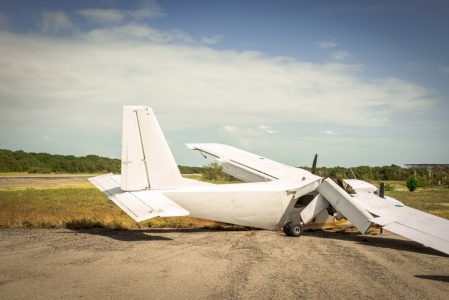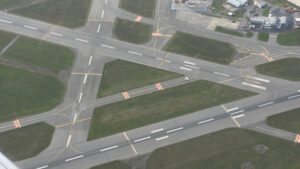In addition to pilot training, runway overrun accidents may decrease after the creation of an overrun awareness alert system
It’s almost embarrassing that a system needed to be developed to help pilots avoid runway overruns….Shouldn’t pilot training take care of that? Unstabilized approaches have been at the forefront of simulator training, standard operating procedures, and accident reports since the beginning of time. So why is this still a problem?
For whatever reason, runway overruns are still one of the biggest problems in business aviation safety. Unstabilized approaches refer to errors in airspeed during approach, descending too rapidly, having too long of a flare before touchdown, and/or not going around when any of the above is occurring. Embraer is the first of the business aviation manufacturers to include a system to help eliminate this kind of pilot error during landing and it’s a pretty cool invention.
The Runway Overrun and Awareness Alerting System (ROAAS) is designed to reduce the risk of a landing accident/incident. When the aircraft is on approach, the system calculates “runway distance required” for landing in real-time. When the aircraft is on the ground during rollout, the system gives the pilot “distance remaining” data. It also provides aural and visual annunciations.
Three alerts are specifically designed to reduce the overrun risk, while the “long flare” caution lets the pilot know it’s time to get on the ground NOW. We’ve all had our moments of floating, and in my opinion, every business jet needs this function! It sure beats the old pucker factor effect. Remember that? When you’re flying with a relatively new co-pilot? Yeah, me too.
Check out these 4 new alerts:
- The yellow overrun caution (between 500 to 100 feet) warns the pilot that the predicted stop position is beyond the end of the runway and that the pilot must take corrective action.
- The red overrun warning (between 100 and 30 feet) predicts that the aircraft will stop beyond the end of the runway. If this is preceded by a long flare, it activates at 5 feet and the pilot must perform a go-around.
- The red overrun warning when the aircraft is on the ground predicts that the airplane will stop beyond the end of the available runway. The pilot must use all available braking to stop (obviously).
- The long flare yellow caution calculates that there is still enough available runway to land and stop, but only if the pilot gets on the ground immediately.
Doesn’t that sound like a system we could all use every now and then? Yes, pilot training goes over this ad nauseum, but it’s impossible to account for every scenario we will encounter when we’re actually out flying the line. Distractions, gusts of wind, ATC requests….it all adds up to pilot judgment and sometimes we could use a little help from our computer friends. I like the idea of having a second opinion when I’m busy on final. I hope this technology becomes standard equipment in the years to come. We’ll all be safer because of it!
RELATED CTS TRAINING










